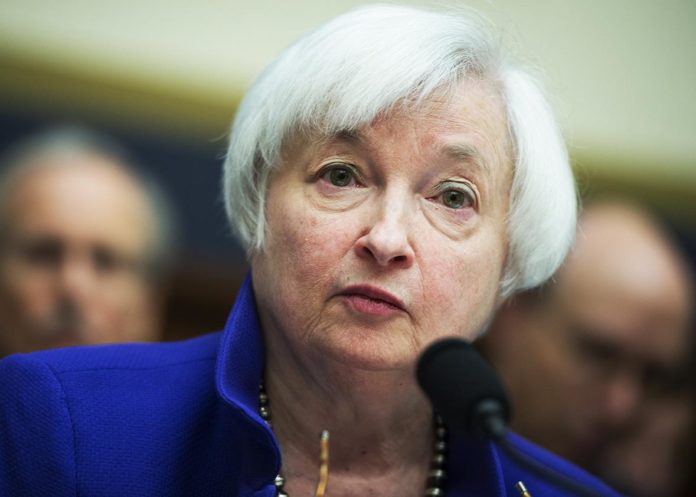Another day, another new all-time high.
Stocks gained this morning as Big Tech led the way. Amazon (NASDAQ: AMZN) and Google-parent Alphabet (NASDAQ: GOOG) were among the top performers on the day.
Rising Chinese stocks helped lift shares, too, following last week’s major regulatory crackdown by Beijing. Ark Investment Management announced that it bought shares of JD.com (NASDAQ: JD), China’s largest first-party e-commerce company. JD shares surged at the open as the Hang Seng Index (located in Hong Kong) rose as well.
The question now is whether the general market can keep climbing after notching yet another record high. MKM Partners chief economist Michael Darda thinks it’s not only possible but probable for three main reasons.
“The first one, that’s extremely low discount rates. The 10-year Treasury yield is barely off the August lows,” he said.
“So, all things equal, if interest rates are low, if discount rates are low, valuations will tend to be higher because of a lack of competition.”
Darda continued, adding:
“In addition to that, we have a very high liquidity environment […] and earnings have been incredibly strong. Typically when long-term interest rates are falling, earnings or the economy is faltering. In this case, the earnings have been quite robust, really historic. So, we’re really going to need to see one of those three pillars disturbed in some fashion for a big decline in equity prices.”
Yields aren’t expected to erupt higher in the coming months. And with earnings more or less locked in until the next batch of quarterly results, Darda’s second “pillar” shouldn’t crumble any time soon, either.
That leaves the “very high liquidity environment” being provided by the Fed through its bond-buying programs, otherwise known as quantitative easing (QE). The tapering of QE would very much disturb this last (and certainly most important) economic “pillar” Darda identified. That’s part of the reason why whenever the Fed or Treasury hints at quantitative tightening (QT), stocks dip rapidly.
And that’s also why investors are anxiously awaiting Fed Chairman Jerome Powell’s speech this Friday at the Jackson Hole conference in Wyoming. If Powell engages in bearish taper talk, expect the market to react poorly.
But even without an official declaration from Powell, QT is still very much on its way. It’s just that it will start to happen under the surface. More importantly, it won’t be announced in a post-FOMC meeting press conference like a taper warning would be.
Here’s why:
Congress needs to raise the US debt ceiling, which hit its limit back on July 31st.
For those that aren’t acquainted with the US debt ceiling, it’s the maximum limit to how much the US government can borrow to pay its debts and obligations. Whenever that limit is reached, the US Treasury can’t issue any more notes, bonds, or bills. What it can do, however, is pay for debts and obligations with tax revenue or the Treasury’s saved-up cash balance.
As of July 31st, that cash balance was just $442 billion. That’s a low number historically speaking. From June to July, it plummeted by $398 billion. It now sits somewhere around $309 billion.
Typically, the US Treasury never needs to draw from its cash balance to pay the bills. It just issues new debt to meet its financial obligations.
For the US economy, the practice of issuing new debt usually doesn’t have any significant impact. The amount of money the Treasury spends (which adds cash to the economy) is offset by the debt issued (which removes cash from the economy).
As a result, no liquidity is added nor removed.
But more recently, the Treasury has run into a bit of a problem with this model due to the debt ceiling. It ended up slowing down debt issuance as the debt ceiling rapidly approached, which forced the Treasury to draw from its cash balance to pay for things instead.
And because less debt was being issued (while the cash balance was being spent), this acted as QE. Cash was effectively being injected directly into the economy by the Treasury without the issuance of debt to soak it back up. This has applied serious pressure to short-term rates and is to blame for the negative rates in the repo market.
In October or November of this year, Congress is expected to raise the US debt ceiling. And when it does, the Treasury will issue hundreds of billions of dollars in new debt (which sucks liquidity out of the economy), almost certainly outpacing spending (which injects liquidity into the economy) by a wide margin.
This will result in a significant source of QT, right around the same time corporate earnings hit and just one or two months after Powell is expected to make his taper warning on September 22nd, following September’s FOMC meeting.
So, even if Powell says that tapering isn’t coming until Q1 2022, the truth is that the raising of the debt ceiling will induce QT several months before that. This would completely obliterate Darda’s liquidity “pillar” holding up the bull market. And, if corporate earnings miss analyst estimates, that second “pillar” could simultaneously crumble as well.
That means while the going seems good at the moment, everything could come crashing down when the debt ceiling is raised later this year. Buy and hold investors need to be wary of this as they approach the holiday season, which has historically been a good time to be a bull.
This year, however, it could be a bloodbath as the market’s worst nightmare – QT – becomes a reality via the raising of the debt ceiling.







